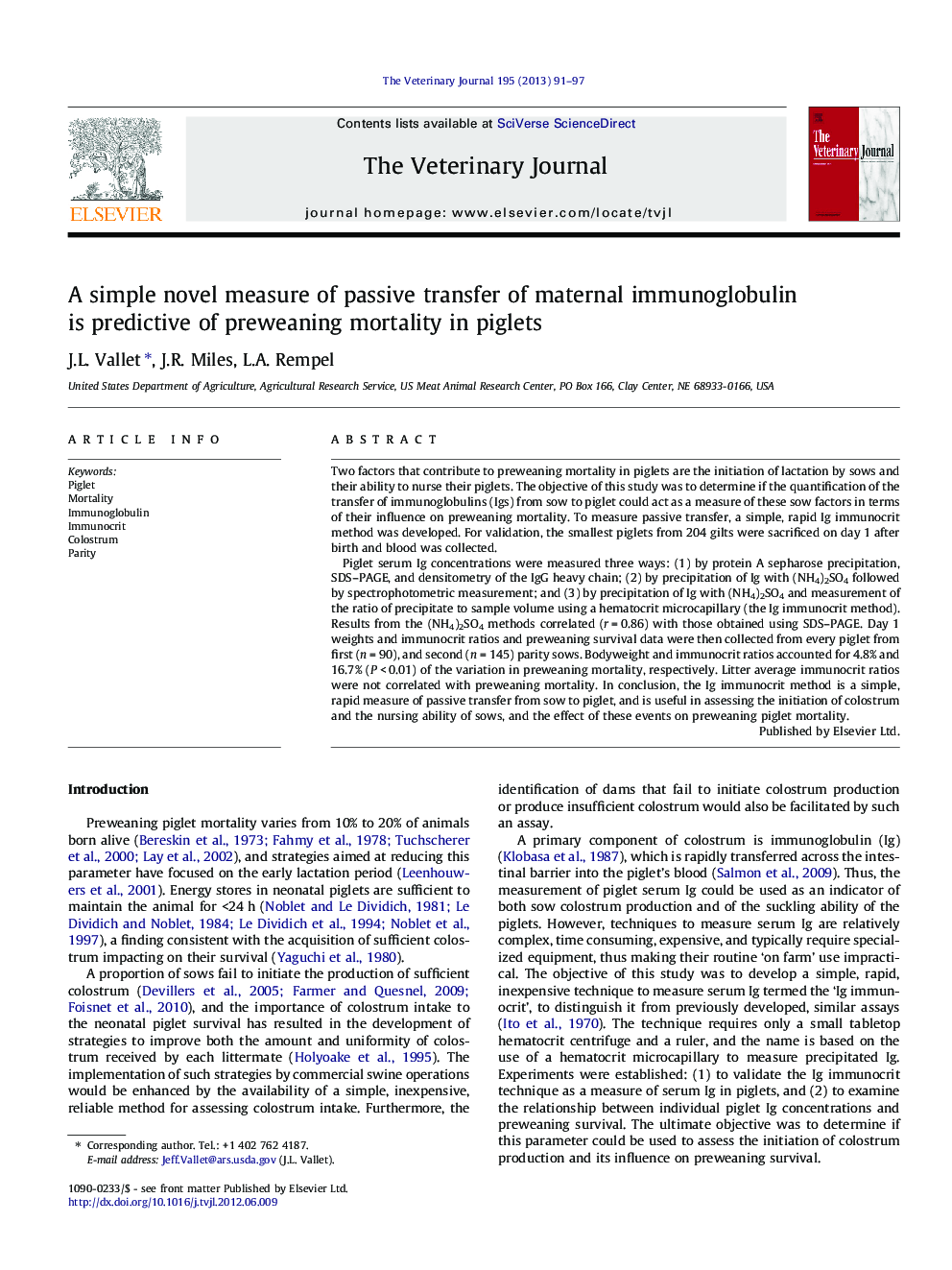| Article ID | Journal | Published Year | Pages | File Type |
|---|---|---|---|---|
| 2464196 | The Veterinary Journal | 2013 | 7 Pages |
Two factors that contribute to preweaning mortality in piglets are the initiation of lactation by sows and their ability to nurse their piglets. The objective of this study was to determine if the quantification of the transfer of immunoglobulins (Igs) from sow to piglet could act as a measure of these sow factors in terms of their influence on preweaning mortality. To measure passive transfer, a simple, rapid Ig immunocrit method was developed. For validation, the smallest piglets from 204 gilts were sacrificed on day 1 after birth and blood was collected.Piglet serum Ig concentrations were measured three ways: (1) by protein A sepharose precipitation, SDS–PAGE, and densitometry of the IgG heavy chain; (2) by precipitation of Ig with (NH4)2SO4 followed by spectrophotometric measurement; and (3) by precipitation of Ig with (NH4)2SO4 and measurement of the ratio of precipitate to sample volume using a hematocrit microcapillary (the Ig immunocrit method). Results from the (NH4)2SO4 methods correlated (r = 0.86) with those obtained using SDS–PAGE. Day 1 weights and immunocrit ratios and preweaning survival data were then collected from every piglet from first (n = 90), and second (n = 145) parity sows. Bodyweight and immunocrit ratios accounted for 4.8% and 16.7% (P < 0.01) of the variation in preweaning mortality, respectively. Litter average immunocrit ratios were not correlated with preweaning mortality. In conclusion, the Ig immunocrit method is a simple, rapid measure of passive transfer from sow to piglet, and is useful in assessing the initiation of colostrum and the nursing ability of sows, and the effect of these events on preweaning piglet mortality.
